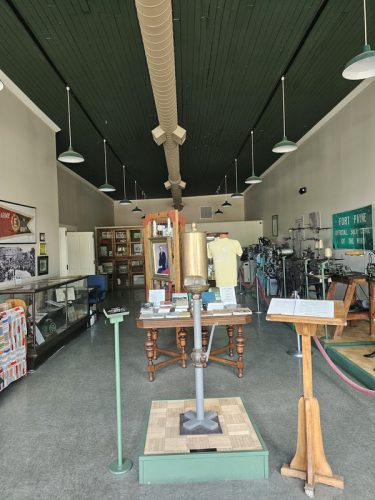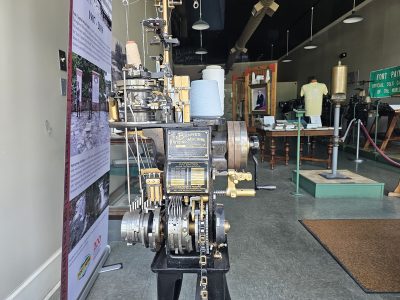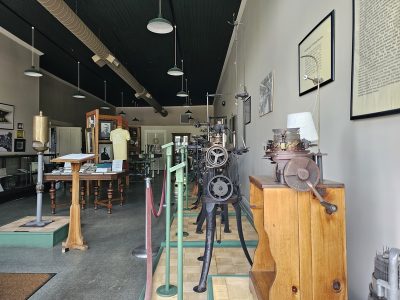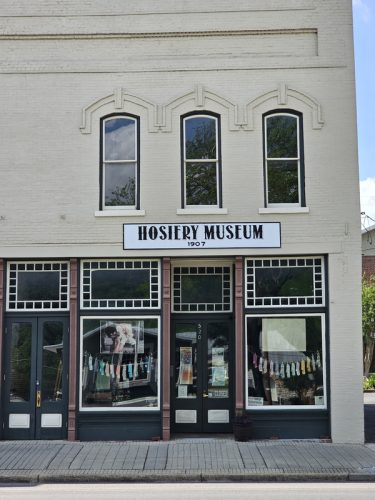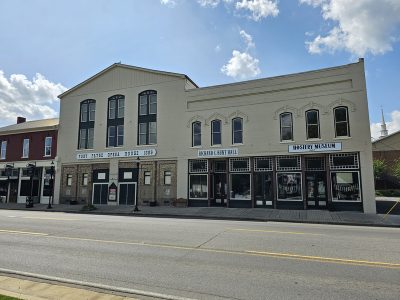Home » Alabama Museums »
520 Gault Avenue N, Fort Payne, AL
The Fort Payne Hosiery Museum in Fort Payne, Alabama, is a captivating attraction that showcases the city's rich history as the "Sock Capital of the World." Housed in a beautifully restored early 1900s building, the museum features an impressive collection of antique sock-making machinery, vintage hosiery, and personal artifacts that offer a glimpse into the lives of the workers who shaped the industry. A visit to this hidden gem provides an unforgettable journey into the past, celebrating the ingenuity and resilience of the people who made Fort Payne a global hosiery hub.
At the Fort Payne Hosiery Museum, visitors can explore the fascinating world of hosiery production by examining antique sock-making machinery, admiring vintage hosiery styles, and learning about the lives of the workers who toiled in the factories. The museum offers an immersive experience that transports you back in time, showcasing the unique history of Fort Payne and its once-thriving sock manufacturing industry.
Friday: 12-4 p.m.
Saturday: 10 a.m.-2 p.m.
In the heart of downtown Fort Payne, Alabama, lies a gem of a museum that showcases the rich history and significance of the hosiery industry in the region. The Fort Payne Hosiery Museum is a testament to the city’s once-thriving sock manufacturing industry, which earned it the title of “Sock Capital of the World.” Today, the museum stands as a symbol of this proud heritage, attracting tourists and locals alike who are curious to explore the fascinating world of hosiery production in the boom days of Fort Payne.
The Fort Payne Hosiery Museum is housed in a beautifully preserved historic building, originally constructed in the early 1900s. The building’s rich history is palpable, with its classic brick facade and large windows reflecting the architectural style of the period. As you step inside, the museum’s carefully curated collection transports you back in time to the heyday of hosiery production in Fort Payne.
The museum’s journey began in 1990, when a group of local historians and enthusiasts came together to preserve the legacy of the hosiery industry. They formed the Fort Payne Hosiery Museum Association, which was instrumental in acquiring the historic building that now houses the museum. Through tireless efforts and fundraising, the association was able to restore the building to its former glory and open the museum to the public in 1992.
One of the main attractions of the Fort Payne Hosiery Museum is the extensive collection of antique sock-making machinery. These remarkable machines, some of which are over a century old, were once the workhorses of the local hosiery industry. As you wander through the museum, you can almost hear the clatter of the machines and the hum of activity that would have filled the factory floors.
In addition to the machinery, the museum also showcases an impressive array of vintage hosiery, including socks and stockings that date back to the early 1900s. This collection gives visitors a unique glimpse into the evolution of hosiery styles and the creativity of the designers who shaped the industry. A few particularly rare pieces in the collection are adorned with intricate lace patterns, a testament to the skill and artistry of the craftsmen who produced them.
The Fort Payne Hosiery Museum is not just about hosiery, however. It also delves into the lives of the workers who toiled in the factories, spinning yarn and operating the machines. The museum features several exhibits dedicated to these unsung heroes, with personal artifacts, photographs, and stories that offer an intimate look at the daily lives and challenges faced by those who worked in the industry.
Visitors to the museum are often surprised to learn that the hosiery industry was not exclusive to women. In fact, the factories of Fort Payne employed men and women alike, with many families relying on the income generated by the industry to make ends meet. The museum pays tribute to the contributions of both male and female workers, highlighting the critical role they played in shaping the community and the industry as a whole.
The Fort Payne Hosiery Museum is more than just a collection of artifacts; it is a living, breathing history of a time when Fort Payne stood at the center of the global hosiery trade. As you walk through the museum, you’ll be captivated by the ingenuity, resilience, and spirit of the people who made this industry thrive. So, if you find yourself in Fort Payne, Alabama, be sure to pay a visit to the Hosiery Museum—a hidden gem that brings to life the rich heritage of this once-bustling sock capital.

